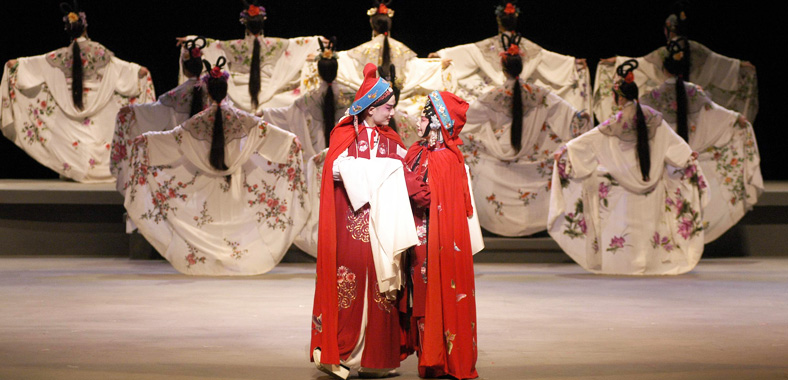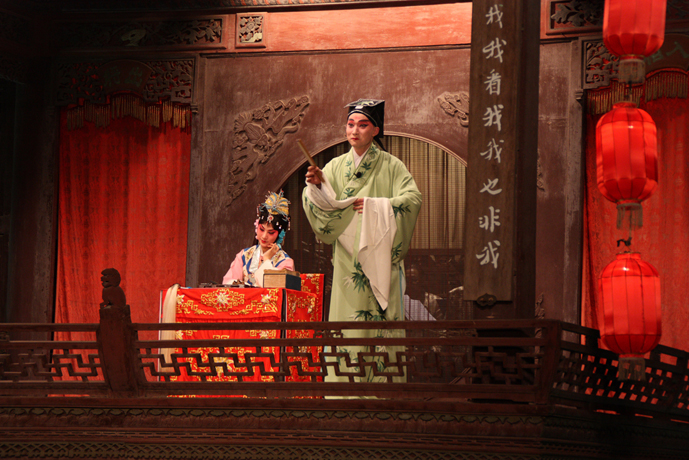Discovering Suzhou’s Kunqu Opera and Cultural Heritage

Welcome to the enchanting world of Suzhou Kunqu Opera, where ancient melodies and timeless stories bring China’s rich cultural tapestry to life. If you’re a traveler eager to delve into Suzhou cultural traditions, or simply curious about China opera history, this guide will transport you to the heart of one of China’s most poetic art forms. Here at jusha.travel, we love sharing tips to make your China journey unforgettable, and Suzhou stands out as a must-visit destination for its blend of history, culture, and serene beauty. As you plan your trip, you’ll gain insights into cultural attractions in Suzhou that connect deeply with Suzhou travel guide essentials and China cultural tours. Join us as we uncover the elegance of Kunqu Opera and why it remains a cornerstone of China’s heritage.
The Origins and Evolution of Kunqu Opera

Suzhou Kunqu Opera traces its roots back over 600 years, making it a pivotal part of China opera history. Originating in Kunshan, a district near Suzhou in Jiangsu Province during the late Yuan Dynasty in the 14th century, this art form began as the Kunshan tune and evolved into a refined theatrical tradition. As detailed on the [Kunqu Opera page](https://www.topchinatravel.com/china-guide/kunqu-opera.htm), early developments were influenced by local musical styles, with key contributions from musician Wei Liangfu in the Ming Dynasty. He masterfully combined southern nanxi operas, known for their flute-based melodies, with northern zaju drama’s stringed instruments, creating the signature “water mill” tunes that flow like a gentle river. For travelers on a China cultural tour, understanding this evolution adds layers to your visit.
One of the first major works, Washing Silken Gauze, penned by Liang Chenyu, elevated Kunqu to a literati favorite, emphasizing emotional depth and poetic storytelling. Over centuries, it became known as the “mother of Chinese operas,” influencing styles like Peking Opera and spreading across regions. According to [Kunqu’s Wikipedia entry](https://en.wikipedia.org/wiki/Kunqu), its peak during the Qing Dynasty’s Qianlong era saw it recognized as a UNESCO Masterpiece of the Oral and Intangible Heritage of Humanity.
Imagine strolling through Suzhou’s canals and gardens, then attending a performance that echoes these ancient origins. If you’re planning a trip, check out Suzhou’s cultural highlights for tips on combining opera visits with explorations of the city’s classical architecture.
Artistic Features and Performance Techniques

What truly sets Suzhou Kunqu Opera apart are its artistic nuances, blending grace, emotion, and precision in ways that captivate cultural attractions in Suzhou. The music features soft, delicate melodies with flowing rhythms, perfect for expressing the inner worlds of characters. As explored in depth on [this resource on Kunqu Opera](https://www.lingoace.com/blog/kunqu-opera:-exploring-the-classical-art-of-chinese-intangible-cultural-heritage–en/), Kunqu’s singing style is fluid and elegant, allowing performers to convey subtle psychological complexities—think of it as poetry set to music. Performances are a feast for the senses, with actors employing expressive body movements, refined hand gestures, and elaborate facial expressions to tell stories without a word.
Costumes, adorned in luxurious fabrics and vibrant colors, reflect Suzhou cultural traditions, drawing from the city’s history of silk production and aesthetic refinement. For instance, the graceful postures and choreography often mirror Suzhou’s harmonious gardens, where nature and art intertwine.
As a traveler, experiencing this firsthand is essential for any Suzhou travel guide. To enhance your visit, pair it with a walk through the Humble Administrator’s Garden, where the tranquility echoes the opera’s themes. This connection not only deepens your appreciation but also ties into broader China cultural tours, where technology plays a role—many venues now use modern lighting and sound systems to preserve authenticity while making it accessible.
Suzhou’s Cultural Landscape and the Role of Kunqu

Nestled among Suzhou’s iconic canals, classical gardens, and white-washed architecture, Suzhou Kunqu Opera is more than an art form—it’s a living embodiment of Suzhou cultural traditions. This city, often called the “Venice of the East,” perfectly mirrors the opera’s themes of harmony between nature and human emotion. Kunqu’s origins in the Wu culture mean its language and melodies are deeply rooted in the local dialect, making performances a gateway to understanding everyday life in ancient China.
For culture enthusiasts, exploring cultural attractions in Suzhou like the Pingjiang Road or the Master of the Nets Garden offers a seamless blend with Kunqu. Here, you can witness how the opera influences modern festivals and community events, keeping traditions alive.
If you’re on a China cultural tour, incorporate practical tips like hiring a local guide who can explain Kunqu’s role in daily life. Technology adds a fun twist—many tours now use apps for real-time translations of lyrics, bridging the gap for international visitors. This integration of old and new ensures Kunqu remains relevant, inspiring travelers to seek out immersive experiences that go beyond sightseeing. It’s similar to exploring other cultural festivals in China.
Preservation Efforts and Contemporary Significance
In recent years, the revival of Suzhou Kunqu Opera has been nothing short of remarkable, ensuring its place in China opera history for generations to come. Facing near-extinction in the 20th century due to shifting tastes, concerted efforts have breathed new life into this art. As noted in [detailed Kunqu resources](https://www.topchinatravel.com/china-guide/kunqu-opera.htm), UNESCO’s 2001 recognition as an Intangible Cultural Heritage sparked initiatives like master-apprentice programs and educational outreach, introducing younger audiences to its charms.
Today, innovations blend tradition with modernity—think contemporary stagecraft and digital projections that enhance performances without losing their essence. This evolution mirrors broader trends in China, where technology intersects with culture, such as using VR for virtual Kunqu experiences. For travelers, this means accessing Suzhou travel guide options that include interactive workshops or online previews before your trip.
A unique insight: Kunqu’s stories often explore universal themes like love and morality, making it relatable to global audiences. During your visit, participate in a preservation workshop to learn basic gestures, fostering a deeper connection. This not only enriches your journey but aligns with jusha.travel’s mission to inspire responsible tourism.
As we wrap up our exploration of Suzhou Kunqu Opera and its cultural heritage, it’s clear that this art form is a bridge to understanding Suzhou cultural traditions, China opera history, and the vibrant cultural attractions in Suzhou. Whether you’re wandering through ancient gardens or applauding a mesmerizing performance, you’ll leave with unforgettable memories and a greater appreciation for China’s enduring legacy. Here at jusha.travel, we’re passionate about guiding you through these experiences, so we encourage you to share your thoughts in the comments below, visit jusha.travel for more inspiring content on China cultural tours, or explore related articles like our Suzhou itinerary guide. What’s your favorite cultural discovery in China? Let’s keep the conversation going!

